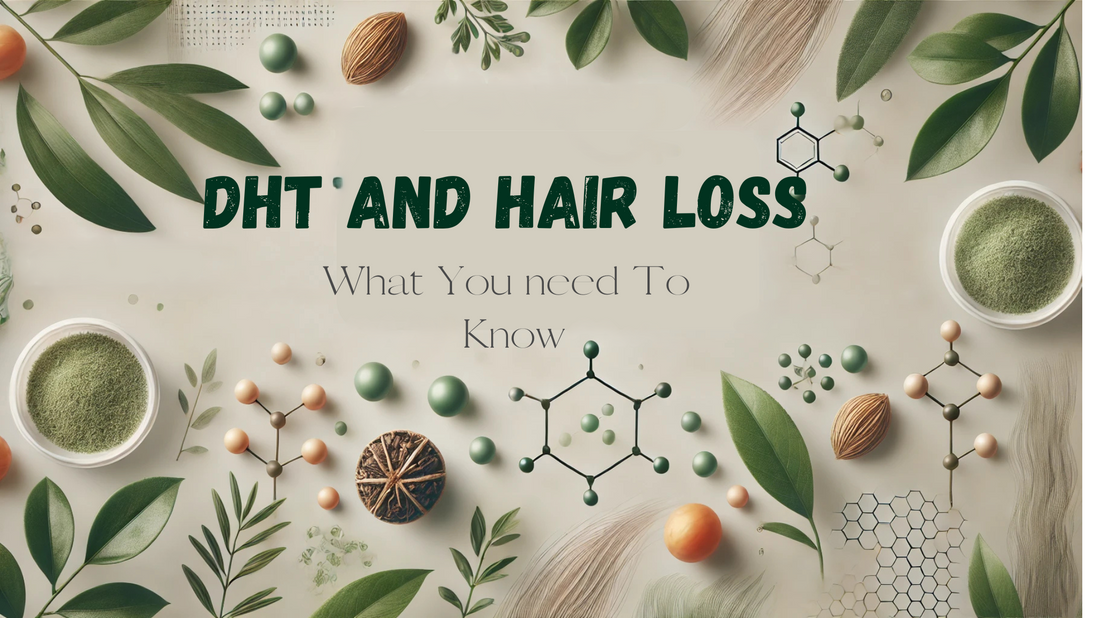
DHT Demystified: The Hormone Behind Hair Loss Explained
If you’ve ever looked into why you might be losing hair, you’ve probably come across the term DHT. It sounds technical, doesn’t it? But understanding DHT is actually key to figuring out why your hair might be thinning or falling out—and more importantly, what you can do about it. Let’s break it down in simple terms.
What Is DHT?
DHT stands for dihydrotestosterone, a hormone made from testosterone. It plays an important role in puberty and other bodily functions, but it’s also one of the biggest reasons behind hair loss, particularly in conditions like androgenetic alopecia (commonly called male or female pattern baldness).
Here’s what happens:
- DHT binds to hair follicles on your scalp.
- Over time, it causes those follicles to shrink, making hair thinner and weaker.
- Eventually, DHT shortens the hair’s growth cycle, and in some cases, hair stops growing altogether in affected areas.

How Does DHT Lead to Hair Loss?
DHT sensitivity is mostly genetic, meaning it runs in families. People with DHT-sensitive hair follicles experience gradual thinning, especially in specific areas like:
- Men: The hairline and crown (classic male pattern baldness).
- Women: Overall thinning across the scalp, especially around the part.
But here’s the thing: not everyone who has DHT sensitivity loses hair. Other factors like stress, diet, and overall health can either speed up or slow down the effects.
Can You Manage DHT?
The good news? You don’t have to just sit back and watch your hair disappear. While you can’t completely stop your body from producing DHT, there are ways to reduce its effects. Here’s how:
1. Use Products with Natural DHT Blockers
Certain ingredients are known to counteract DHT on the scalp. Look for hair care products with:
- Saw Palmetto: A natural extract that’s been shown to block DHT production.
- Pumpkin Seed Oil: Helps reduce DHT levels and promotes hair regrowth.
- Green Tea Extract: Contains antioxidants that may inhibit DHT activity.
2. Adjust Your Diet
What you eat directly impacts your scalp and hair health. To naturally combat DHT-related hair loss, include these in your meals:
- Zinc-Rich Foods: Nuts, seeds, and shellfish help regulate hormone production.
- Omega-3 Fatty Acids: Found in salmon, walnuts, and flaxseeds, they reduce inflammation and support hair health.
- Antioxidants: Spinach, berries, and green tea fight oxidative stress that can make hair loss worse.
Pro tip: Cutting back on sugar and processed foods can also help balance hormones and reduce DHT’s impact.
3. Keep Your Scalp Healthy
Your scalp is the foundation for healthy hair. If DHT is causing trouble, taking care of your scalp can make a big difference:
- Regular Scalp Massages: Use oils like rosemary or peppermint, which are believed to stimulate hair follicles and improve blood flow.
- Exfoliate: A gentle scalp scrub once a week can remove product buildup and keep your follicles clear.
4. Explore Medical Treatments
If natural methods aren’t enough, there are medical options you can consider:
- Finasteride: A prescription medication that reduces DHT levels in the body.
- Minoxidil: An over-the-counter treatment that stimulates hair growth directly at the follicle level.
Always consult a doctor before starting any medication.
How Often Should You Focus on DHT Management?
Consistency is key. Whether you’re using natural remedies or medical treatments, give it time. Hair cycles are slow, so it can take a few months to see noticeable changes.
DHT might sound like the villain in your hair loss story, but understanding how it works gives you the power to fight back. Whether you opt for natural ingredients, lifestyle changes, or medical treatments, there are plenty of ways to manage DHT and protect your hair.
Your journey to healthier hair doesn’t have to be complicated—it just takes the right information and a bit of consistency.
